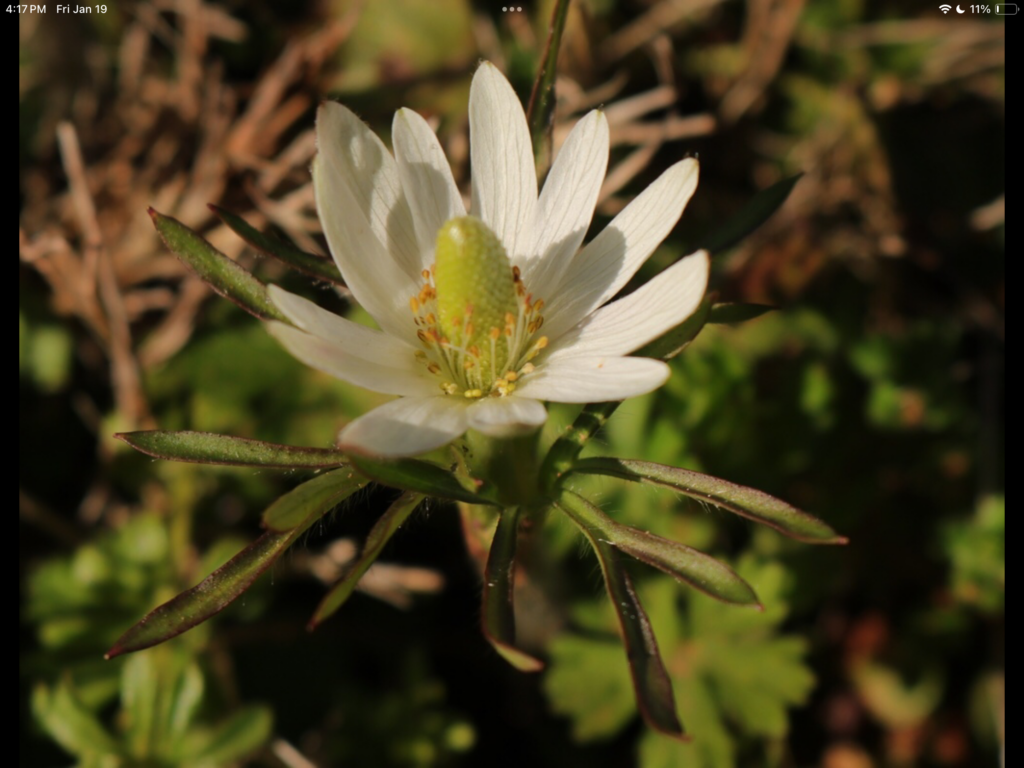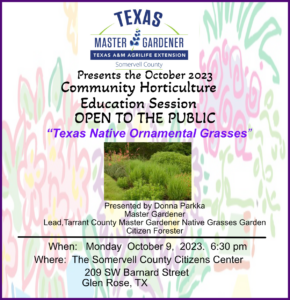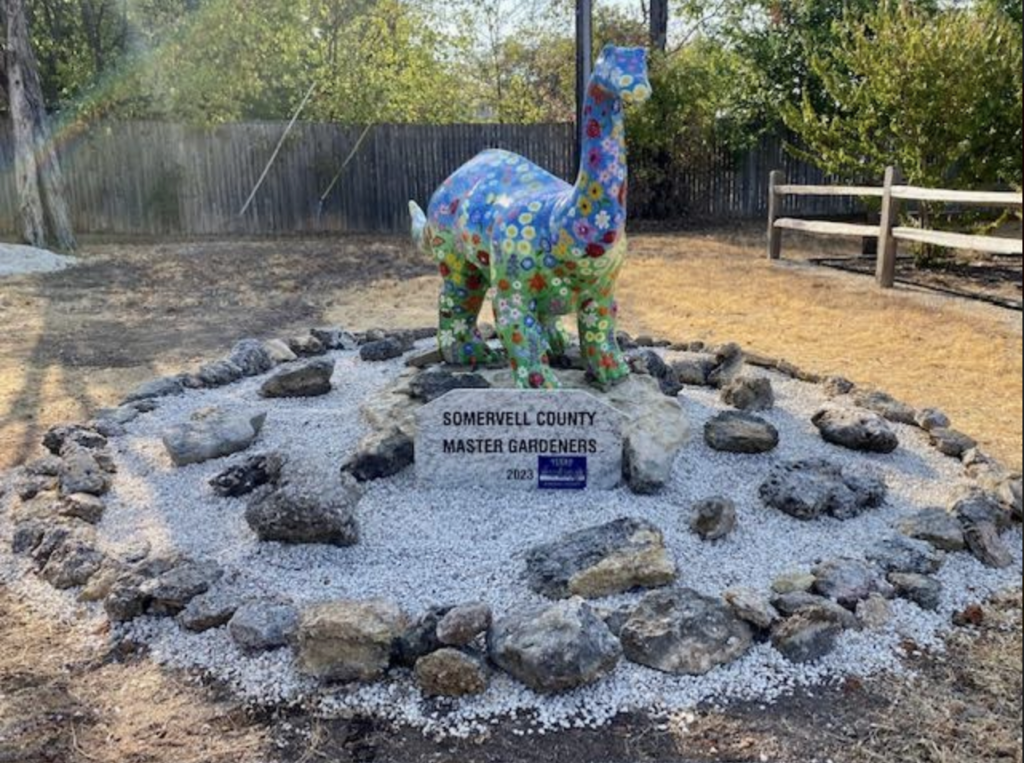Somervell Master Gardeners Present
a February Education Event
for The Public

by jkirksey

by jkirksey
Pilgrims following the ancient Camino de Santiago de Compestella (The Way of St. James), will no doubt encounter Padrones, the signature tapas dish of Galicia in Northern Spain. Padrones are young Padron peppers blistered in olive oil then sprinkled with course sea salt. Seems simple enough. But the Padron has something other peppers don’t – heritage and a secret.

The St. James Connection
As legend has it, St. James the Apostle spread the gospel in what is now Northern Spain. At some point, he returned to Judaea (reason unclear), where Herod Agrippa had him beheaded. The reason for St. James’ killing is muddy, though historians believe the execution probably had something to do with James’ reputed bad temper and sassy mouth.
Eventually the stone ‘pedron’ was moved a few miles inland where it became the centerpiece of a church dating from tenth century. The village Padron flourished around the church. Visit Church of Santiago today in modern Padron, and see the ancient stone.
As for St. James’ body; it was taken further east and secretly buried. Many years later the corpse was rediscovered. Construction of a massive cathedral was begun in 1075 to hold the Saint’s remains. For over nine hundred years, the Santiago de Compestela Cathedral in Santiago, Spain has been the destination for pilgrims traveling The Camino de Santiago known as The Way of St. James.



Now, back to the peppers.
Padron – The Peppers. The Tapas. The Secret.
Padron pepper seeds were first brought to Northern Spain by Franciscan friars returning from Mexico. The pepper thrived, and soon took the name of the village Padron. Today over 3000 pounds of these peppers (also called Pimentos de Hebron) are produced each year in areas around the Padron municipality.
The peppers are small, cone shaped, and usually look a little wrinkled. Padrons are harvested young for the Galicia region’s world famous tapas dish – Padrones.
Nothing fancy here. A order of Padrones is two dozen or so young Padron peppers blistered in a good olive oil, then sprinkled with course salt and served hot. If you decide to try Padrones (the tapas), be ready for celebrated secret of the Padron pepper.

Most young Padron peppers are mild and easy to eat. But about one in ten (as the local estimate goes) are fiery hot. Hot or mild; there is no way to tell the difference by looking. As the Galatians waiters are fond of saying:
Os pementos de Padrón, uns pican e outros non (“Padrón peppers, some are hot, some are not”).
Growing Padrons
Until just a few years ago, Padron seeds were hard to find in the States. Not so much these days. Seeds sold by many online seed sellers.
Here in North Texas, I start my Padron seeds indoors around mid-February. They are very easy to grow and seem to have few problems with pests or disease. They need full sun, and will tolerate heat if they are watered regularly and mulched well. Padron plants continue to produce even through our triple digit dog days in July and August.
For Padrones – the Tapas, peppers should be picked when they are young and still green. These will be 1-2 inches long. Six healthy plants are enough to feed my personal serial cravings for Padrones.
All Padron peppers, if allowed to grow, will become fiery hot. A very tasty, but very hot, Chipotle powder can be made by smoking then grinding Padron peppers that have become red.
by jkirksey

Tenpetal Anemone
Ponder this. Human beings have celebrated the Vernal Equinox (daytime and nighttime are the about the same lengths) as the first day of Spring for Thousands of years. When does a plant in North Central Texas celebrate the first day of Spring?
IT STARTS WITH THE WINTER SOLSTICE
Humans have known about and celebrated the Winter solstice for thousands of years. Five thousand years ago, Stonehenge was built to align with the Winter and Summer Solstices.
The Winter Solstice (December 21 or 22 in our neck of the woods) is the shortest day and, conversely, the longest night of the year. This means daylight hours will gradually grow longer (and nights become shorter) through the spring and early summer until the Summer Solstice (June 21) – the longest day of the year. So, what’s all this got to do with plants, trees, grasses, and gardeners
THEN THERE IS PHOTO-PERIODISM
Photo-Periodism is the response of an organism the length of light or dark. This is really a big deal. Over millions of years, the Photo-Periodism Effect (slight changes in daytime-nighttime length) has become nature’s way of signaling the coming season. Scientists think this is because, unlike variable environmental factors (e.g. rainfall, temperature, etc.), the Daytime/Nighttime Lengths Cycle never changes. Photo-Periodism delivers cues to millions of living organisms signaling it’s time to begin seasonal transition.
When it comes to plants, a recent study describes Photo-Periodism as “… one of the most significant and complex aspects of the interaction between plants and their environment.”
Changing Daytime/Nighttime length (as signaled by the Winter Solstice) spurs a Photo-Periodism induced transition to Spring. Inside the plant’s biology, these processes drive things like blossom development, leaf growth, and root-spread. As gardeners, we anxiously await those beautiful blooms.
How reliable is Photo-Periodism? One multiyear study found Photo-Periodism was a better predictor of blossom development than either snowmelt (temperature proxy) and date. In this study, pollinator was highly correlated with the effects of Photo-Periodism.
Nothing hard is ever easy, and nothing complicated is ever simple. Photo-Periodism is complex, and only partially understood. Some plants are short-day sensitive, while others are long-day sensitive. Some plants are unaffected by Photo-Periodism. To paraphrase many of the research papers, “Much more study is needed.”
EARLY SPRING FLOWERS
Now is the time in Texas to keep an eye out for those early Spring flowers (sometimes called “ephemerals”). Often, they are low to the ground (probably for the warmth) with small (or even tiny) blossoms. Taller, leggier wildflowers will appear as the Texas heat rises in the summer.
Where I live (North Central Texas) this time of year brings henbit (the “weed” we love to hate), little anemones, the ever-present dandelion, and an occasional wild trillium. Pear and wild plum trees begin to bloom. Pollen packets begin appearing on Wingback Elm trees. And of course, there is always bees aplenty buzzing about.
THE FUTURE OF PHOTO-PERIODISM
It seems nothing can escape the long arm of humankind. Photo-Periodism is no exception. Wide spread light pollution from artificial lighting has been shown to have negative effects on certain plants. Some herbicide treatments seem to interfere with some plants’ Photo-Periodism processing. And as always, the BIG, SCARY unknown is Climate Change. Here’s why.
Plants, animals, and marine life – must “anticipate and prepare” for seasonal transitions. Failure to make this transition can be fatal. Life forms have come to rely on Photo-Periodism to adapt to rigors of the coming season. If Climate Change alters timings of this cycle, things may not go well.
The 2023 Winter Solstice has come and gone. The transition to Spring has begun even though the chill is still with us, and there are probably frosty days ahead. But when we see those first flowers of Spring, we know Photo-Periodism is alive and well, and it’s time for gardeners to get busy.
by jkirksey
Somervell Master Gardener January 2024 CHES program
January 8, 2024 6:30pm
Somervell Citizens Center 209 SW Barnard, Glen Rose
This first CHES program of 2024 is all about
blossoms, bees, and honey.  Our speaker will cover: why bees make honey; how bees use nectar to make honey; and some surprising facts, myths, and misunderstandings about honey. Come learn how the partnership between flowers and bees gives us the sweetest treat of all.
Our speaker will cover: why bees make honey; how bees use nectar to make honey; and some surprising facts, myths, and misunderstandings about honey. Come learn how the partnership between flowers and bees gives us the sweetest treat of all.

 Kirk Kirksey is a Master Beekeeper (University of Montana) and a certified Advanced Beekeeper (Texas). He is president of the Glen Rose Dino Bee Beekeeping Club and a board member of the Texas Honey Bee Education Association. Kirk, his wife Joy, Emma the Dog, and their bees live in Hood County.
Kirk Kirksey is a Master Beekeeper (University of Montana) and a certified Advanced Beekeeper (Texas). He is president of the Glen Rose Dino Bee Beekeeping Club and a board member of the Texas Honey Bee Education Association. Kirk, his wife Joy, Emma the Dog, and their bees live in Hood County.
by jkirksey
by Donna Hagar
Somervell Master Gardener November CHES program
Tool Maintenance with Harold Annis
Nov 13, 2023 6:30pm
Somervell Citizens Center 209 SW Barnard, Glen Rose
 Harold Annis, a 13-year veteran of the Tarrant County Master Gardeners is also Vegetable Gardening and Plant Propagation Advanced Training certified. Harold began gardening with his grandmother in the 1950’s in Shawnee, Oklahoma and got a great education in vegetable gardening and many other life lessons from her. For over 30 years, he has maintained a 2-acre vegetable garden in Southlake, giving him ample opportunities to maintain and repair garden tools. Come and learn the finer points of caring for garden tools and equipment from a tried-and-true master!
Harold Annis, a 13-year veteran of the Tarrant County Master Gardeners is also Vegetable Gardening and Plant Propagation Advanced Training certified. Harold began gardening with his grandmother in the 1950’s in Shawnee, Oklahoma and got a great education in vegetable gardening and many other life lessons from her. For over 30 years, he has maintained a 2-acre vegetable garden in Southlake, giving him ample opportunities to maintain and repair garden tools. Come and learn the finer points of caring for garden tools and equipment from a tried-and-true master!
by jkirksey
by jkirksey
 Our Speaker is Donna Parikka. Donna was born in Merced and raised in Citrus Heights, California on a mini family farm. Gardening was always a large part of her childhood as they raised their own vegetables, fruit and beef. She participated in 4-H for 7 years with horse, beef, clothing, food and leadership projects. She has lived on Cleburne and Burleson Texas for the last 53 years. She attended University of Texas at Arlington and worked for 50 years as an accountant, most of which were with the same CPA firm in Cleburne. Her interests are gardening or anything outdoors including hanging out with her two very spoiled Australian Shepherds..
Our Speaker is Donna Parikka. Donna was born in Merced and raised in Citrus Heights, California on a mini family farm. Gardening was always a large part of her childhood as they raised their own vegetables, fruit and beef. She participated in 4-H for 7 years with horse, beef, clothing, food and leadership projects. She has lived on Cleburne and Burleson Texas for the last 53 years. She attended University of Texas at Arlington and worked for 50 years as an accountant, most of which were with the same CPA firm in Cleburne. Her interests are gardening or anything outdoors including hanging out with her two very spoiled Australian Shepherds..
A lifetime gardener she became a Tarrant County Master Gardener in the class of 2018 as part of her retirement plan. She is now the lead over the demonstration native grasses garden and serves as the TCMGA as treasurer in 2023. She is a master gardener advanced tree and propagation specialist and a Citizen Forester.
by jkirksey
Come see The Somervell County Master Gardeners Dino at her new home in Paluxy Heritage Park – 103 Heritage Place, Glen Rose.

Kudos to the artist Molly Golson for painting such a beautiful dino.
Our dino still needs a name. If you would like to submit a name for consideration, click on the link below.
Her name will be announced on October 14 at the Master Gardener Learning Expo. Come join the fun from 10:00am to 2:00pm. More details to follow
by jkirksey
Monty Anderson – Master Gardener. Master Composter. Certified Propagation Specialist.
Monday, September 11, 2023
6:30 – 7:30pm
Somervell County Citizens Center, 209 SW Barnard, Glen Rose

Monty Anderson has been a Master Gardener
since 2016, and participates in both the Tarrant
County and Somervell County Master Gardener Program.
Monty was born in Fort Worth. He holds B.A
and M.A. degrees. After 38 years with Bell
Helicopter Monty retired in 2013. He and his wife, Lisa,
live in Somervell County.